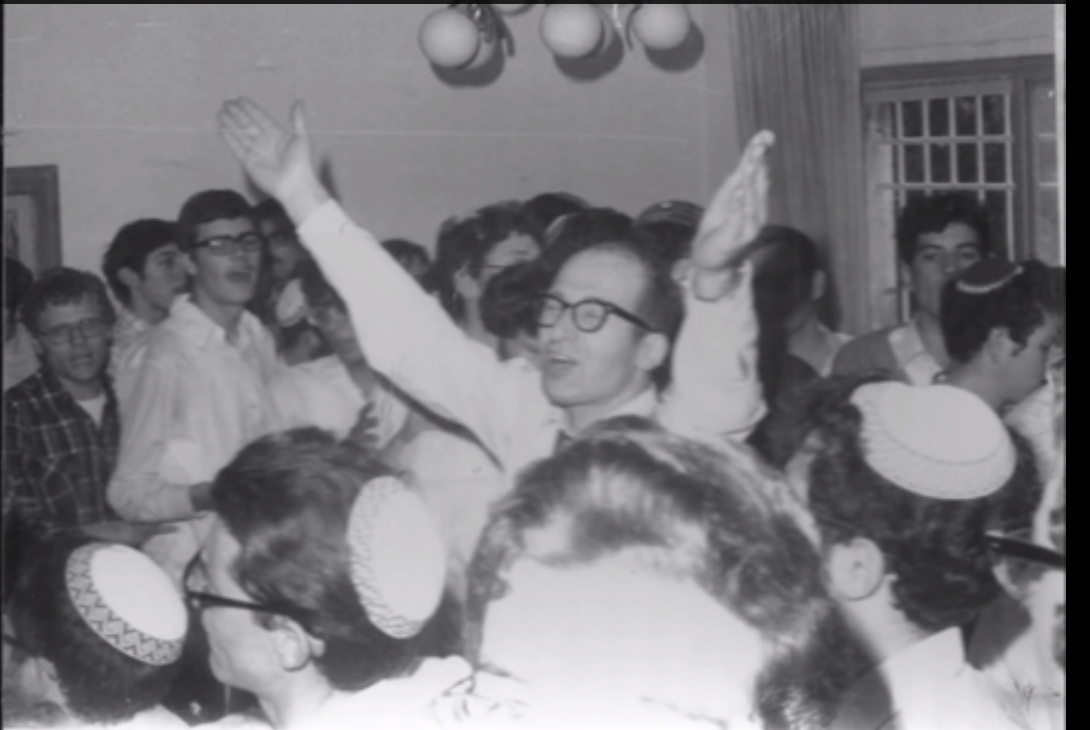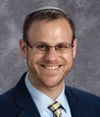A Vision of Greatness

HaRav Aharon Lichtenstein ZT”L often stressed the importance of exposure to first-rank Torah personalities – never in reference to himself, of course – invoking “what Whitehead called a vision of greatness” as an “essential educational tool” (Leaves of Faith, Vol. 2, pg. 327). For me, as a first-year yeshiva student, the encounter with Rav Lichtenstein offered a vision that was so bright as to be nearly blinding.
My overwhelming recollection of those earliest encounters is one of simply being overawed. The memories are, more than anything, a collection of searing images. Searing images of Rav Lichtenstein at his makom bent over his sefarim at a near ninety-degree angle. Searing images of the way his affect would reach a crescendo at the height of a shiur or sicha, or the intensity of his focus while reading the Haftarah on a public fast day. Searing images of his full-bodied embrace of the Torah scroll while dancing on Simchat Torah, singing from the deepest recesses of his soul “Ashrei Adam Oz Lo Bach,” “How fortunate is the person who has strength in you.” Searing images of the intensity of his recitation of the Avodat Yom Hakippurim, at a time in the afternoon when most were fading. Searing images of his haunting recitation of “Or Zaruah la-tzaddik” on the night of Kol Nidrei. Searing, indelible images.
I returned to yeshiva a few years later as a more mature young adult. I spent that year studying the laws of kashrut, while participating in Rav Lichtenstein’s chaburot in Tractate Chulin. I began to appreciate Rav Lichtenstein in new ways. In addition to encountering him directly, I had been consuming anything and everything he had written that I could get my hands on. I took note of the aspects of the Western canon that he valued, as well as the incremental and qualitative contributions he had made to Brisker lomdus. I came to see his decision to leave America and Yeshiva University for Medinat Yisrael and Yeshivat Har Etzion as one that irreversibly shaped the contours of both communities. I observed the extraordinary work ethic that was necessary for him to properly complete his incredibly demanding teaching load and overall responsibilities. I started to scratch the surface of his ethical sensitivity and humanism, astounding humility, once-in-a-generation authenticity, and remarkable dedication to his students. And I was struck by the fact that as dedicated as he was to his students, he was even more committed to his family.
And then I left. I spent numerous years continuing to learn in a Beit Midrash, but he was no longer an immediate presence. And yet ironically, in many ways I most strongly felt Rav Lichtenstein’s ongoing influence after having left the four walls of Yeshivat Har Etzion. As I began making crucial life decisions, I found myself drawing upon that more mature appreciation of Rav Lichtenstein and asking myself, how would Rav Lichtenstein have approached this question? What would he have advised, or, more more correctly, what perspectives might he have offered to help me better arrive at a decision?
Even more formative than that mature appreciation, however, were the images. Precisely as I left the rarefied air of the Beit Midrash and encountered some of the challenges that lie outside, it was the demut deyukno shel Rabbeinu, the visage of our master, that accompanied me more than anything else. When I study Torah, it is the image of Rav Lichtenstein’s hatmadah, diligence, that keeps me learning a bit longer and a bit better. When preparing to speak or deliver a shiur, I will at times try to conjure the passion with which he related to his subject matter. When reciting the Avodah on Yom Ha-Kippurim, I have one eye on the words on the page and another on Rav Lichtenstein swaying urgently in his kittel. And while my learning, teaching and davening clearly don’t hold a candle to his and leave plenty to be desired, he has lifted me by offering a glimpse of the endless vistas of a life dedicated to service of God.
It was only a few years later that it dawned upon me that my experience was far from coincidental. This was precisely the educational vision that Rav Lichtenstein always had in mind. He had spoken explicitly about not just learning Torah, but about situating Torah study as a cardinal value that frames our lives far beyond our time spent in yeshiva – including those of us who would ultimately be involved in Avodat Hakodesh. He stressed that the debate between Rabbeinu Tam and Rabbeinu Elchanan as to whether Torah or earning a living is primary is a practical argument, not an axiological one, for all agree that Torah study ought to stand at the epicenter of our religious universe. I came to realize that he understood quite well that we would soon step outside those hallowed walls and be required to draw upon the wellsprings of inspiration with which we had been saturated.
More than that, I can't help but wonder if in this regard Rav Lichtenstein was inspired by a frank admission of his father-in-law, the Rav ZT"L. In a brief essay that Rav Lichtenstein has termed "the single best introduction to the Rav's thought" (Leaves of Faith, Vol. 1, pg. 202), Rav Soloveitchik accepts partial blame for what he perceives as a generation of students who are intellectually accomplished but spiritually lacking:
And therefore I affirm that I can identify one of those responsible for the present situation, and that is none other than myself. I have no fulfilled my obligation as a guide in Israel... I have fallen short as one who spreads the "Torah of the heart..." And the failing lies with me. (translation from Leaves of Faith, ibid.)
Perhaps Rav Lichtenstein took note of the Rav's candid confession and sought to correct course by modeling immersive religious experience for his students - in regard to Torah study and beyond.
Be that as it may, the project of inspiring students not just as lamdanim but in the wider ambit of what it means to be an oved Hashem certainly stood at the top of Rav Lichtenstein's ladder of priorities, and I benefited from that commitment upon every encounter.
For me, one of the most powerful of those images was that of Rav Lichtenstein dancing with the Torah on Simchat Torah. Each year, as if possessed, he would chant again and again what we knew to be quite possibly his favorite song: “Ashrei adam oz lo bach,” “How fortunate is the one who derives strength from you.” After I learned of his passing, reeling, I turned to that chapter of Tehilim (84). The next morning, I looked back at the perek again. It dawned on me that the subject matter of that chapter is precisely the same theme that Rav Lichtenstein so passionately modeled and conveyed. The mizmor describes in vivid detail the meshorer’s craving to sit in the House of the Lord. In Rav Lichtenstein’s own words in connection with a similar verse in Tehilim 27:
“Who is the author of [the] verse [‘One thing I ask of the Lord: to sit in the house of God all the days of my life’]? King David! Was he the model of a person who spent all his time ‘gazing on the beauty of the Lord and frequenting His temple?’ Not at all. He ran a country and commanded an army, but nevertheless saw himself as rooted in avodat Hashem and his ultimate aspiration in coming close to God.”
I now understood why it was those words that he sang so passionately year after year. Certainly they resonated deeply with him, but it was meant for us as well. He wanted us to read that passuk and that chapter, to imbibe its messages, and above all to live them – no matter how far we might find ourselves from him and, most important to his mind, the vivifying and electric atmosphere of the Beit Midrash.
Even more than a more mature appreciation of his profound teachings, it is those searing images that have sustained me – and, I suspect, so many others. Our “vision of greatness” may feel more distant than ever, but its light still brightly illuminates the way.
